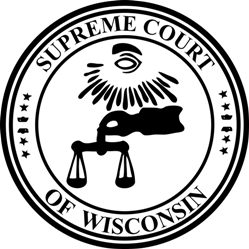Wisconsin Supreme Court 2025 Election by the Numbers
April’s contest is a rare open seat race that will not require a primary to narrow the field
 Yet another ‘high stakes’ Supreme Court election will take place in Wisconsin this spring with liberals attempting to retain their narrow 4-3 majority which they claimed less than two years ago when Milwaukee County Circuit Court Judge Janet Protasiewicz defeated former Supreme Court Justice Daniel Kelly by double-digits following the retirement of long-serving conservative Justice Pat Roggensack in August 2023.
Yet another ‘high stakes’ Supreme Court election will take place in Wisconsin this spring with liberals attempting to retain their narrow 4-3 majority which they claimed less than two years ago when Milwaukee County Circuit Court Judge Janet Protasiewicz defeated former Supreme Court Justice Daniel Kelly by double-digits following the retirement of long-serving conservative Justice Pat Roggensack in August 2023.
While technically nonpartisan contests, Wisconsin Supreme Court elections have in recent years (e.g. 2011, 2013, 2015, 2019, 2023) served as proxy post-presidential or midterm political barometers, particularly given Wisconsin’s well-deserved battleground state status and because it is often the first high profile statewide race in the nation following the November elections.
This cycle, liberal justice Ann Bradley is retiring from the Court with former GOP Wisconsin Attorney General and sitting Waukesha County Circuit Court Judge Brad Schimel running against Dane County Circuit Court Judge Susan Crawford.
No primary will be held as Schimel and Crawford were the only two candidates to file for the seat.
The April 2025 contest marks just the sixth time in Wisconsin history in which the state has hosted back-to-back open seat Supreme Court elections (excluding newly created seats as the Court expanded):
- 1961 and 1963
- 1977 and 1978
- 1980 and 1983
- 1995 and 1996
- 2018 and 2019
- 2023 and 2025
Overall, of the more than 135 Wisconsin Supreme Court elections conducted since statehood, just 22 have not involved incumbents (again excluding newly created seats).
The 2025 race between Schimel and Crawford is just the fourth out of 17 general elections for the office to be held without a primary since the primary era began during the early 20th Century. The remaining three were:
- 1925: Circuit Court Judge E. Ray Stevens defeated Milwaukee Attorney and 1922 Supreme Court Candidate John Kleist by approximately a 2:1 margin
- 1978: Circuit Court Judge John Coffey beat Monroe County Judge James Rice by 11.7 points
- 2019: State Court of Appeals Judge Brian Hagedorn eked out a 0.5-point victory against Court of Appeals Chief Judge Lisa Neubauer
An average of 3.8 candidates have sought election to the Wisconsin Supreme Court across these 17 open seat elections held during the primary era.
Of the last 10 contested elections to the Court conducted since 2008, four have been decided by less than five percentage points including two by less than 8,000 votes.
Follow Smart Politics on X/Twitter.

– Since there was no contest to speak of in 2017 (with elected incumbent Annette Marie Kingsland Ziegler re-elected unopposed, also the most recent one with an elected justice standing for re-election) it seems rather difficult to consider that one as having been a “proxy political barometer”; the Democrats would sweep the statewide slate the very next year!
– The 2020 contest involved an appointed incumbent (Kelly), who had been ‘fortunate’ enough to sit on the court since 2016 (unlike apparently any other state, the Badger State permits only one WISC election each year). Thus, the upcoming election marks *the fifth consecutive one not involving an elected incumbent*.
– One of the Republicans who were swept out in the 2018 Democratic tide was Mr. Schimel, whose win would *restore the majority the Right & Far Right had from 2008 to 2023*. He has also stood for statewide elections in ’14 and ’18, and thus would be a comparatively better-known contender. However, Judge Crawford seems to have at least a 50-50 chance to prevail, particularly if “president Elon” himself or his policies-by-proxy prove highly unpopular.
Indeed – the last time more than one election was held for the Wisconsin Supreme Court in the same year was 1878 when a fourth and fifth seat were created and needed to be filled. Prior to that, in 1871 Justice William Lyon technically won a special and general election to the short and full term respectively. Good catch on the 2017 typo – corrected above. Thanks!
The Democrat Collective☭︎ have turned this State into a ghetto. Crime is skyrocketing, inflation is out of control, illegal immigrants are swarming in by the hordes, property taxes are through the roof. What is the matter with You People on the left?
(Odds & Ends)
– The 2025 inauguration is the first since 1985 that will take place *indoors*. The weather is indeed predicted to be quite cold (though no colder than in, say, 1961) but this has been known for quite some time, and thus many suspect that the rather late change of venue is much more likely to avoid the ’embarassment’ of an underwhelming outdoor crowd, smaller than even the one in 2013, which was also the most recent one held during the MLK three-day weekend.
– For the first time ever, a person who has not won two consecutive elections and who will not be constitutionally eligible to seek the office again will be sworn in (Cleveland would have been eligible for another term in 1896; Ford would not have been in 1980 had he won in 1976).
(There is a non-trivial chance that the year 2025 will have *three* persons occupying the office; the others are 1841 and 1881).